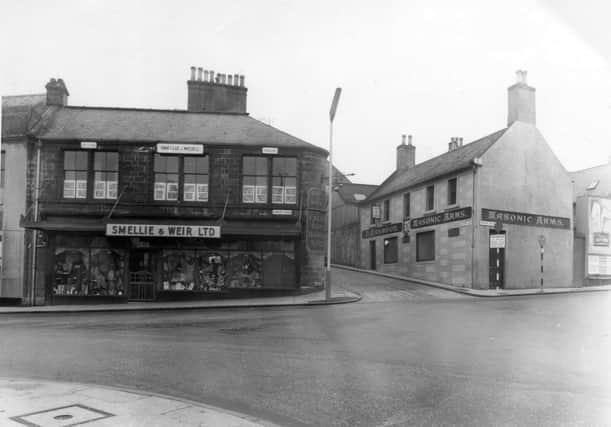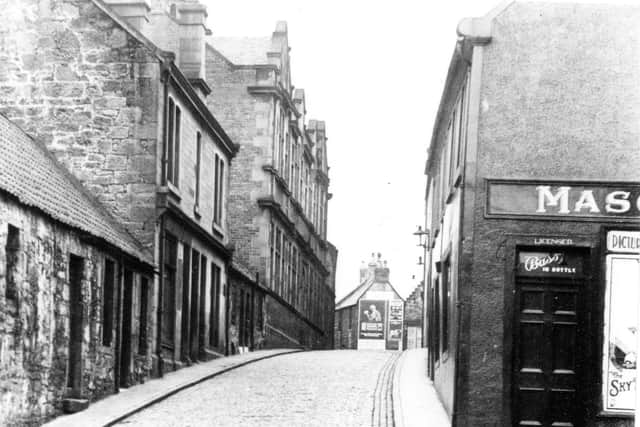Memories of pawn shops and piano players in Falkirk's ancient Silver Row


For example it is more than 60 years since the bulldozers consigned the ancient cobbled Silver Row to the dustbin of history.
The street ran from the junction of Bank Street and Manor Street up the hill across what is now Callendar Square to where it came to an abrupt end at what we called the ‘Sandy Hole’.
Advertisement
Hide AdAdvertisement
Hide AdIn earlier years it had carried on down the slope to meet the High Street near the east end but that part, consisting of old decrepit houses had been demolished in the 1920s.


Why the old street had its intriguing name is still a mystery.
No silver mines here I’m afraid and no silversmiths either.
Maybe it was a family name or a corruption of something else altogether.
The part that survived until the 1960s had most of the really interesting buildings.
Advertisement
Hide AdAdvertisement
Hide AdAt the junction with Manor Street on the right was the Masonic Arms, known to everyone as the ‘Gluepot’.
One lady told me that it got this name because “if your man went in there he was stuck for the night”.
More likely a reference to the strong glue used by the local patternmakers or the glue workshops in Wooer Street which used the animal bones from the Fleshmarket at the foot of the steeple.
It had been the meeting place of Falkirk’s first lodge of Freemasons and the coat-of-arms and inscription from the building have been preserved in the lodge’s present home in Graham’s Road.
Advertisement
Hide AdAdvertisement
Hide AdOn the opposite corner was Falkirk’s main pawn shop, Smellie and Weir’s and, further up the hill, on the left, St Francis Xaviers Catholic Primary School.
The front building had been added around 1900 to the original small school building which looked a bit like a church and was really on the Callendar Riggs.
I can well remember the Headmaster, John Farrell who was a Town Councillor and had been the commander of the Falkirk Home Guard in World War II.
He was a smallish, round man, a bit like a barrel so you can imagine the nicknames!
Advertisement
Hide AdAdvertisement
Hide AdOpposite the school was the town’s variety theatre, the Roxy, where the cream of Scottish talent – and Max Bygraves – packed them in.
The building had been the Erskine Church from the 1740s until 1905 when the congregation moved to Hodge Street and it had spells as the Empire and the Electric Theatre.
One of the last acts was ‘Syncopating Sandy’ Strickland, a non-stop pianist who played for 75 hours.
People queued up to see him, paying sixpence if I remember right, with the sound relayed to the crowds outside by loudspeaker!
Advertisement
Hide AdAdvertisement
Hide AdRound the corner in what was Horsemarket Lane was the hall of the Erskine Church which I remember as the Olivet Gospel Hall.
It stood close to the old graveyard which was cleared along with everything else in the early 60s.
The remains of the deceased were bundled up and reburied in Camelon Cemetery.
Older residents thought that disturbing the graves was a risky business and that “no good will come of it”.
The chequered history of the area since then might prove the point!